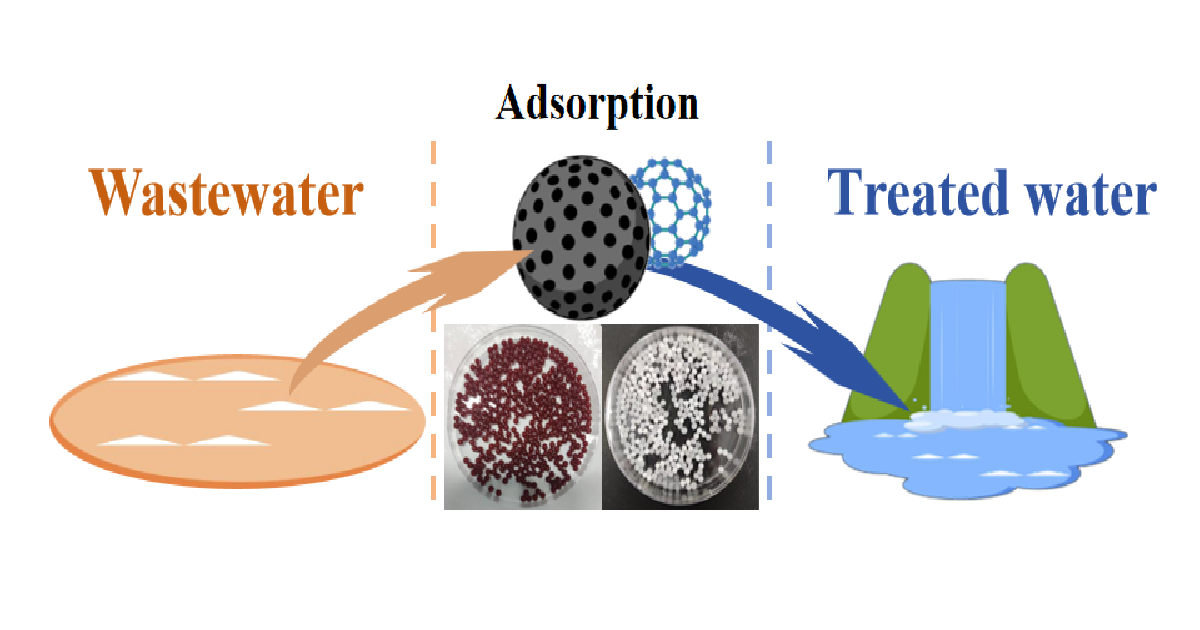Adsorption Technologies in Wastewater Treatment Processes
A special issue of Water (ISSN 2073-4441). This special issue belongs to the section "Wastewater Treatment and Reuse".
Deadline for manuscript submissions: closed (25 June 2025) | Viewed by 15063

Special Issue Editors
Interests: adsorption; nutrient recovery; modeling; heavy metals; wastewater treatment
Special Issues, Collections and Topics in MDPI journals
Interests: groundwater remediation; water and wastewater treatment; environmental impact assessment; heavy metals, antibiotics
Special Issues, Collections and Topics in MDPI journals
Special Issue Information
Dear Colleagues,
The process of adsorption plays a crucial role in water and wastewater treatment. It can effectively reduce the concentration of harmful substances in water by attaching the various pollutants (heavy metals, nutrients, organic matters, and dyes, etc.) to adsorbent surfaces. In practice, adsorption technology can not only improve the quality of drinking water and protect human health but also play an important role in industrial wastewater treatment, sewage reuse, and seawater desalination, etc. Adsorption has the advantages of being a simple operation, with relatively low cost, strong adaptability, and it even allows for the complete removal of micropollutants, making it extremely important in solving water pollution issues, ensuring water resource security, and achieving sustainable development. Through the continuous improvement and optimization of adsorbents, the efficiency and economy of adsorption technology are constantly improving, providing new opportunities for innovative development in the water treatment industry. The topics of this Special Issue include, but are not limited to, the following:
- adsorption technology and its combination process;
- various water pollutants, regardless of organic or inorganic substances;
- surface water, groundwater, sea water, drinking water, industrial wastewater, etc.;
- emerging contaminants;
- various modification, optimization, modeling, regeneration methods;
- machine learning, artificial neural network, deep learning, etc.;
- novel adsorption materials and their characterization.
Dr. Qili Hu
Dr. Liting Hao
Guest Editors
Manuscript Submission Information
Manuscripts should be submitted online at www.mdpi.com by registering and logging in to this website. Once you are registered, click here to go to the submission form. Manuscripts can be submitted until the deadline. All submissions that pass pre-check are peer-reviewed. Accepted papers will be published continuously in the journal (as soon as accepted) and will be listed together on the special issue website. Research articles, review articles as well as short communications are invited. For planned papers, a title and short abstract (about 250 words) can be sent to the Editorial Office for assessment.
Submitted manuscripts should not have been published previously, nor be under consideration for publication elsewhere (except conference proceedings papers). All manuscripts are thoroughly refereed through a single-blind peer-review process. A guide for authors and other relevant information for submission of manuscripts is available on the Instructions for Authors page. Water is an international peer-reviewed open access semimonthly journal published by MDPI.
Please visit the Instructions for Authors page before submitting a manuscript. The Article Processing Charge (APC) for publication in this open access journal is 2600 CHF (Swiss Francs). Submitted papers should be well formatted and use good English. Authors may use MDPI's English editing service prior to publication or during author revisions.
Keywords
- adsorption
- modeling
- optimization
- novel materials
- emerging contaminants
- recovery
Benefits of Publishing in a Special Issue
- Ease of navigation: Grouping papers by topic helps scholars navigate broad scope journals more efficiently.
- Greater discoverability: Special Issues support the reach and impact of scientific research. Articles in Special Issues are more discoverable and cited more frequently.
- Expansion of research network: Special Issues facilitate connections among authors, fostering scientific collaborations.
- External promotion: Articles in Special Issues are often promoted through the journal's social media, increasing their visibility.
- Reprint: MDPI Books provides the opportunity to republish successful Special Issues in book format, both online and in print.
Further information on MDPI's Special Issue policies can be found here.






